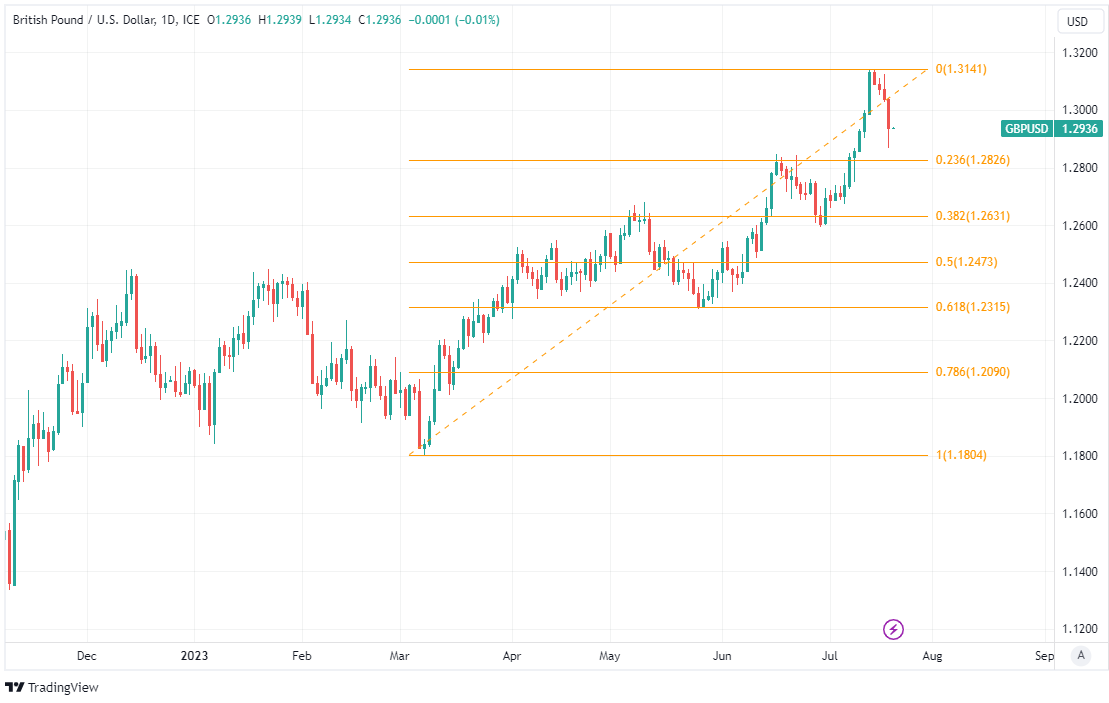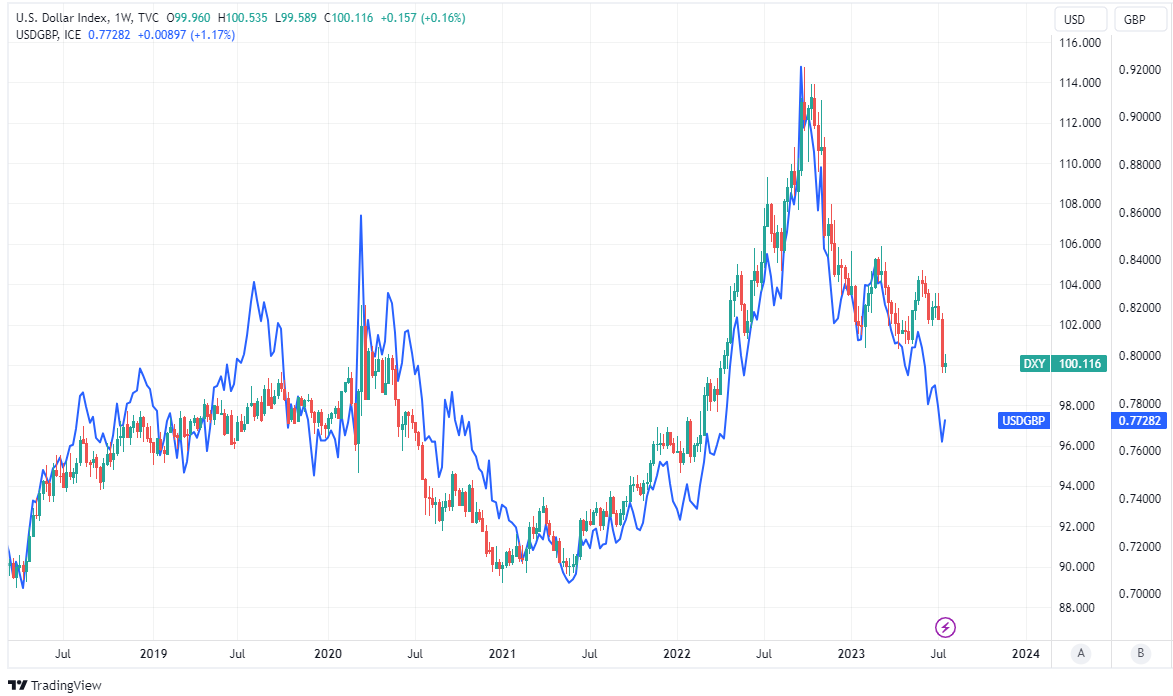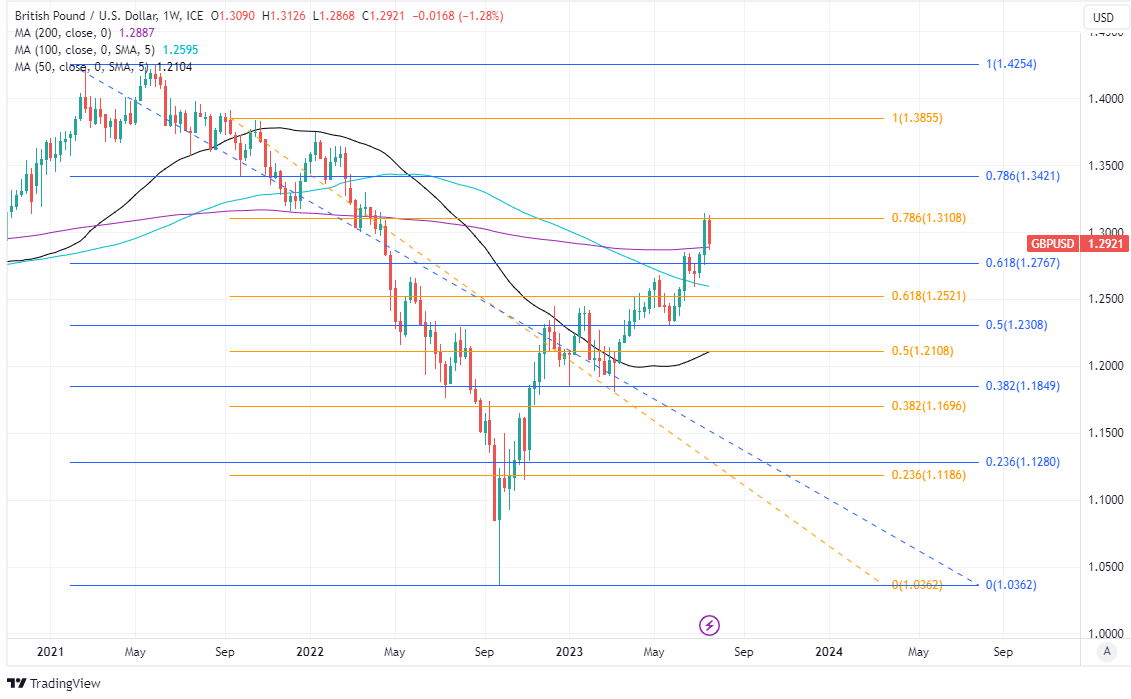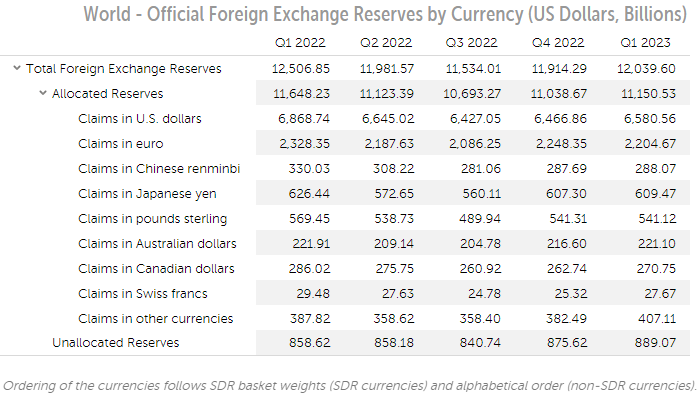GBPUSD Supported Around 1.2826
- Written by: James Skinner
-
- GBP/USD supported around 1.2826 on charts short-term
- Technical resistances around 1.30, 1.3108, 1.33 & 1.3421
- Analysts grow increasingly bullish on outlook for Sterling
- But sellers still out there as some eyeing 1.2750 or below
- Optimism on UK & global economies seen as upside risk
- USD's weakness and possible reserve selling also cited

Image © Adobe Images
The Pound to Dollar rate fell back below 1.30 in the opening half of the week but a confluence of factors could see it attempt to regain the level in the days ahead with some risk or chance of new highs near 1.33 owing to a confluence of factors including a less bleak outlook for the UK and global economies.
Sterling reached its best level against the Dollar since April 2022 earlier this week but was hobbled when Office for National Statistics (ONS) figures suggested on Wednesday that inflation fell further than expected last month and that it could be on course to meet the May forecasts of the Bank of England (BoE).
However, when softening price pressures are combined with historically high wage growth in the labour market, the result is a form of stimulus for the UK economy, which has gotten some analysts growing more optimistic about the outlook for Sterling.
"While it is true that inflation slowed from an uncomfortably high pace, both core and especially services inflation remains well above target, even on a sequential basis. We therefore think the UK is still in a different place than its peer group," says Michael Cahill, a G10 FX strategist at Goldman Sachs.
"The market reaction reflects a belief that the BoE has a relatively dovish reaction function, with limited follow-through from the surprise 50bp hike at the last meeting. We think these concerns will ultimately be misplaced, and think Sterling can outperform on a combination of further divergence and cyclical tailwinds," he adds.
Above: Pound to Dollar rate shown at daily intervals with Fibonacci retracements of March recovery indicating possible areas of short-term technical support for Sterling.
Resilience on the household side of the economy has been evidenced in recent months by persistent real or inflation-adjusted growth in the official measure of retail sales, the next edition of which is out on Friday, though this is merely the domestic side of the rally in the Pound to Dollar rate.
Sterling's rally is also a story of a declining Dollar, which has fallen widely of late with many analysts citing growing optimism about the outlook for the U.S. and global economies, and particularly after U.S. inflation was reported to have fallen back to 3% for the month of June last Wednesday.
"US Treasury Secretary Janet Yellen yesterday gave an upbeat assessment of current economic conditions in the US, which is very much reflected in recent market price action as falling inflation fuels optimism of a soft landing," says Derek Halpenny, head of research, global markets EMEA and international securities at MUFG, on Wednesday.
June's data places inflation close to the 2% average target of the Federal Reserve (Fed) and could mean an end to its interest rate cycle is near, which matters for the global economy and especially for 'emerging markets'.
Some of the latter experienced financial instability and other forms of hardship as the Dollar rose with the Fed's interest rate in the wake of last year's invasion of Ukraine.
Above: U.S. Dollar Index shown at weekly intervals alongside USD/GBP.
"In emerging market economies, a 10 percent US dollar appreciation, linked to global financial market forces, decreases economic output by 1.9 percent after one year, and this drag lingers for two and a half years," write Rudolfs Bems and Racha Moussa in a Wednesday article for the International Monetary Fund (IMF).
But economic factors are not necessarily the only drivers of the Pound to Dollar rally, which has built a significant head of steam in the second quarter and particularly so since July 06 when U.S. Treasury Secretary Janet Yellen announced from Beijing that "the world is big enough for both our countries to thrive."
"It is my belief that a wide swathe of our economies can interact in ways that are uncontroversial to both governments. The fact that despite recent tensions we set a record for bilateral trade in 2022 suggests there is ample room for our firms to engage in trade and investment," the Treasury Secretary also said.
"We also face important global challenges, such as debt distress in emerging markets and developing countries and climate change, where we have a duty to both our own countries and to other countries to cooperate," the former Federal Reserve (Fed) chair added in an official readout of her remarks.
The statements were billed widely as an attempt to bridge the geopolitical divide between the world's two largest economies but also appear to have been taken by some as something more, and potentially negative for the U.S. Dollar.
Above: Pound to Dollar rate at 2-hour intervals shown alongside EUR/USD and inverted or upside down USD/CHF, USD/JPY and Dollar-Renminbi rate. Captures July. It's possible. This chart might be showing Sterling and the Yen being bought and then sold for Euros and Swiss Francs.
"The four horsemen of the “Yellen went to Beijing” USD selloff have been USDJPY, GBPUSD, EURUSD and USDCHF," says Brent Donnelly, CEO at Spectra Markets and a career trader with time spent between hedge funds and global banks like Nomura and HSBC.
"Two of them have reversed decisively [GBPUSD and USD/JPY] and the bad news from China continues. That should weigh on EUR, AUD, NZD and CAD," he adds in Wednesday's am/FX newsletter.
Donnelly warned earlier in July that some of the recent declines by the Dollar and rallies in other currencies may be the result of central banks selling reserves, and drew a connection on Wednesday between this and Janet Yellen's appearance in Beijing earlier this month.
He is a seller of the Pound and has been looking for it to fall as far as 1.2757 over the coming days but also warned that it could rally sharply higher if there is any fresh break above 1.30, while the next major technical resistance levels for Sterling are above 1.32 and 1.33.
"The topside resistance is again 1.2980/1.3000 and if we go back above there, something is wrong. Therefore, I’m moving my stop loss wayyyy down from 1.3226 to 1.3026," Donnelly says after tipping GBP/USD as a sell from 1.3080 earlier this week.
Above: Pound to Dollar rate shown at weekly intervals with Fibonacci retracements of selected downtrends indicating possible areas of technical resistance for Sterling.
There has long been speculation suggesting waning appetite for U.S. Dollar currency reserves but this has been more frequent since the onset of the pandemic and Russian invasion of Ukraine, while International Monetary Fund data has also revealed a slow but steady trend of diversification into other currencies.
The Pound has itself has previously appeared to benefit from selling of U.S. Dollar reserves, though others have been the clearer winners in the latest Composition of Official Foreign Exchange Reserves (COFER) reports.
Appetite for the Euro has been most notable in the past while the 'commodity Dollars' of the G10 group might now be equally as attractive to diversifiers following the invasion of Ukraine with all of its implications for commodity prices, and particularly if analysts are right to anticipate a 'soft landing' for the global economy up ahead.
"The target and take profit is 1.2757 which is through the 1.2850 support, but above the convergence of the trendline supports (1.2725/40) and the 1.2680 bottom of the old equilibrium zone," Donnelly says on Wednesday.
"I will hold onto the GBPUSD short because I think long GBPUSD positioning is significant, and I don’t mind trading the USD from the long side for a few days as we seem to have passed the peak of the mutant USD selling," he adds.
Source: International Monetary Fund.










